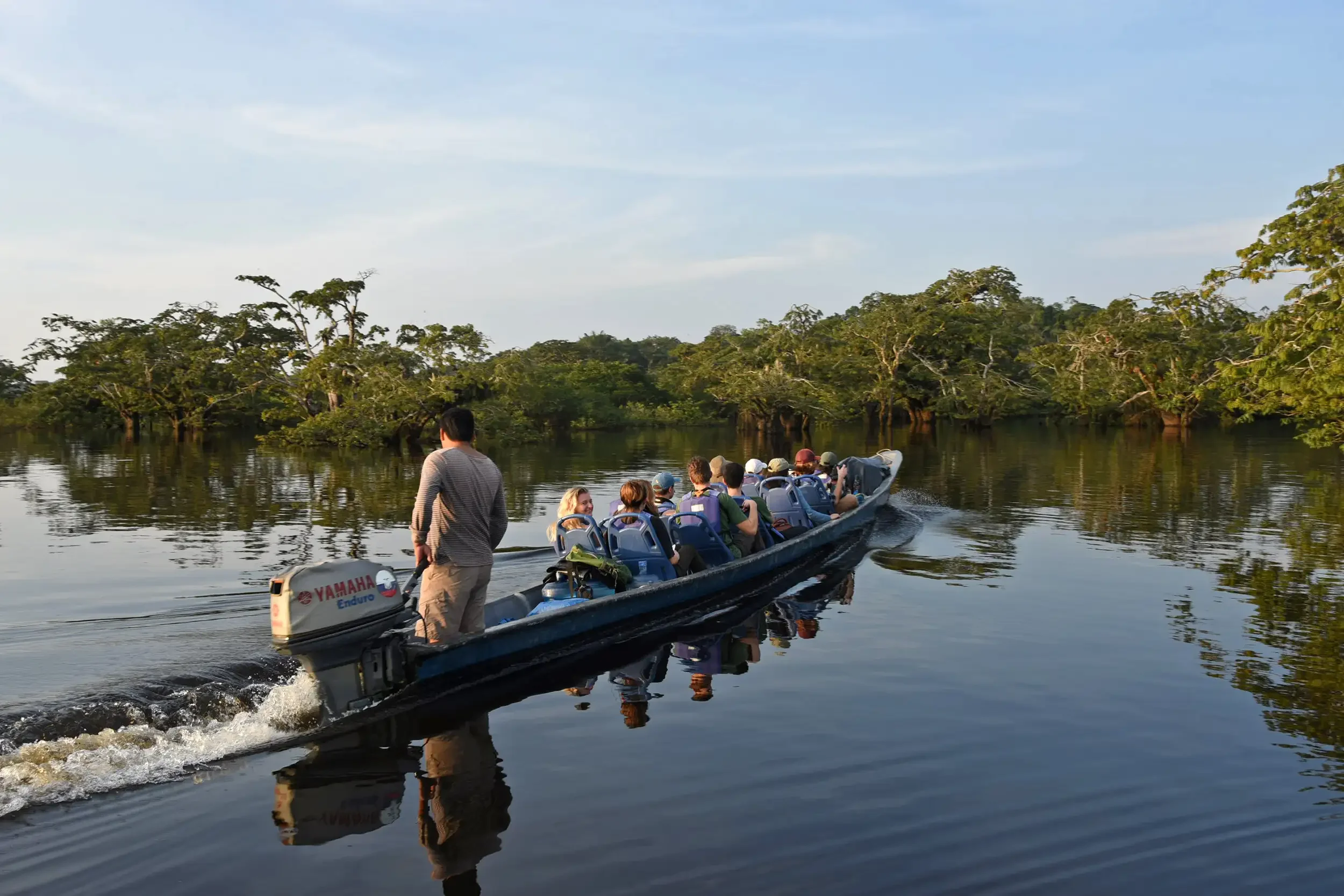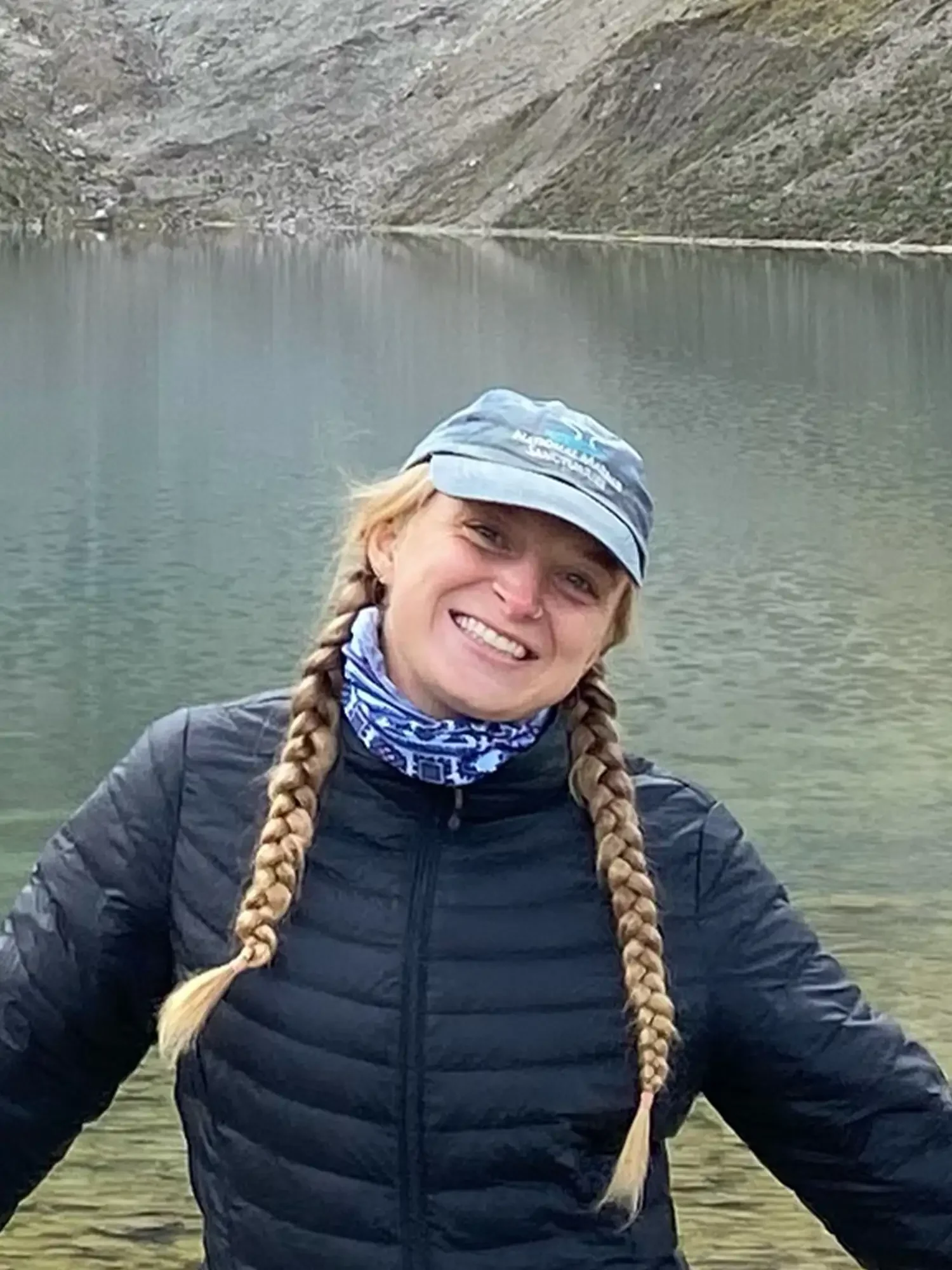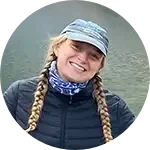Program Details
Location: Quito, Ecuador
Dates: Winter 2026: January 22—March 6, 2026
Winter 2027: January 20—March 4, 2027
Applications: Accepted on a rolling admission basis
Accommodations: Research stations, occasional camping, youth hostel or rural lodge
Credits: 15 quarter credits or 10 semester credits
Language: English instruction
Courses: Environmental Wildlands Studies, Environmental Field Survey, Wildlands Environment and Culture
Prerequisites: One college level course in environmental studies, environmental science, ecology or similar. 18 years of age
Program Costs
Ecuador Winter 2026
$ 150 Application Fee
$ 7,500 Program Fee
$ 4,950 In-Country Logistics Fee
$ 1,700 Estimated Airfare and Mandatory Travel Insurance
$ 750 Estimated Food and Personal Expenses
$15,050 Total Estimated Cost
Winter 2026: Program fees due by November 1, 2025
Ecuador Winter 2027
$ 150 Application Fee
$ 7,750 Program Fee
$ 5,050 In-Country Logistics Fee
$ 1,700 Estimated Airfare and Mandatory Travel Insurance
$ 750 Estimated Food and Personal Expenses
$15,400 Total Estimated Cost
Winter 2027: Program fees due by November 1, 2026
The Program
Owing to its unique location and geography, straddling the equator and bisected by the massive Andes mountains, Ecuador is among the world’s most important biodiversity “hotspots,” with more species of plants and animals found in the country’s grasslands, forests, aquatic and coastal habitats than almost anywhere else on the planet. Here we can observe animals such as giant otters, black caiman, Amazonian river dolphins, monkeys, marine mammals, hundreds of species of birds, and a bewildering variety of butterflies and other exotic insects. Team members will take part in hands-on investigations of key species, habitats and local management of these resources.
We begin our studies in the high Andes, where the chilly grasslands of the paramo are the dominant ecological feature. The bizarre frailejones, a giant member of the daisy family, contribute to the mysterious atmosphere of this unique ecosystem. The paramo gives way to cloud forest, so named because the trees are enveloped in a perpetual covering of fog and mist. This transition, known as an “ecotone,” is another factor driving such high levels of biodiversity. We will hone our identification and observational skills, examine endemic plant and animal species, and study conservation initiatives that aim to protect the region’s disappearing natural ecosystems. From the high Andes we make our way to our second field site, the Rio Bigal Biological Reserve, at the base of the Sumaco volcano in the Andean foothills. Here, where cloud forests meet the sprawling Amazon basin, Andean spectacled bears and jaguars roam the area. At Rio Bigal we will focus on plant and animal census techniques, biodiversity monitoring and ecological observational skills.
Next we head to the Yasuni Scientific Research Station in Ecuador’s lowland Amazon. This region is home to the highest concentrations of plant and animal species known on Earth. While the majority of Yasuni’s rainforest is intact and wildlife populations are generally healthy, oil development has emerged as a growing threat to both biodiversity and local indigenous communities. From the lowland jungles of Yasuni we depart for the Galápagos archipelago, perhaps the world’s most famous natural evolutionary laboratory. In the Galápagos we will study how extreme isolation has resulted in a diverse flora and fauna that is almost entirely endemic. We will also study the human activities that now threaten the islands’ plant communities and wildlife and what is being done to protect and restore this irreplaceable natural treasure.
By the end of the project team members will have a deep understanding of the Ecuadorian natural and human landscapes, the human activities that threaten their biological integrity, and the efforts underway to restore and protect the country’s natural environment.
Academic Syllabus
Student Program Manual
Stories From the Field
Jenna Callan
Ecuador 2025 Alumni
“The six weeks I spent in Ecuador through the Wildlands Studies Program gave me some of the best memories of my life. We travelled from the high Andes to the lowland Amazon, and finished our program in the Galapágos islands.
On the Ecuadorian mainland, every morning we woke up to the sounds of wildlife. Whether it was squirrel monkeys swinging in the trees, white-throated toucans screaming from the treetops, or the gentle ribbits of frogs, we were constantly reminded of the beauty and interconnectedness of the ecosystems around us.
We spent the last week of our program on the Galapágos islands and the biodiversity of these small, isolated islands was breathtaking. We snorkeled almost every day, and encountered sea lions, Galapágos green turtles, and even juvenile black-tipped reef sharks. You always had to be careful of where your flippers were because you never knew what marine life could be passing by.
Along with amazing wildlife experiences, the teaching team for the Ecuador program was incredible and ensured students gained a deep understanding of Ecuadorian ecosystems and biodiversity. With a combination of wonderful classmates, passionate instructors, and stunning biodiversity, I could not have asked for a better study abroad experience.”
Watch the Ecuador Video
Geoffry R. Gallice
lead instructorPhD in Entomology, University of Florida, 2015
Geoff is a tropical biologist and conservationist based in Peru's Madre de Dios region. His research interests are primarily in tropical butterflies, and he has several ongoing projects to study butterfly diversity, ecology, and evolution in southeastern Peru. He also leads the Alliance for a Sustainable Amazon, a non-profit organization working in Madre de Dios that aims to conserve Amazonian biodiversity and other natural resources through basic biological research, reforestation and agroforestry, and environmental education and outreach. Geoff has been teaching with Wildlands Studies since 2012 and currently leads our Ecuador program.





















